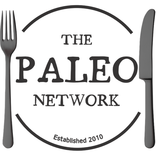Grass Fed Beef In Australia & New Zealand?
I was talking to an Australian Doctor at the Ancestral Health Symposium about finding grass fed meat in Australia. He was explaining to me that Australian meat is almost all grass fed, unlike America where grass fed meat is a lot harder to come by.
Grass fed beef has a far better omega 6:omega 3 ratio and far more vitamins & minerals than grain fed beef.
Since I got back I've been trying to find out if more about beef quality and availability. Until I make friends with a farmer, if I could be certain I was buying grass fed meat, I’d be very happy!
It seems that grass fed beef is dependent on the season; meaning springtime meat is more grain than grass fed.
On their website Coles state: –
Coles source both grass and grain fed cattle depending on seasonal quality. When rains are good, cattle are fed on grass. Being high in beta carotene, this is transferred to the meat and is why the fat is cream in colour. During drier times, grass is substituted with grain feed, and the fat has a whiter appearance. We offer both grass and grain fed cattle depending on the seasonal conditions to source the best quality available.
Woolworths doesn't go into much detail on their site, so I wrote to them, and have just received this reply: –
Woolworths has a number of different types of beef on offer. Our Riverine and standard Woolworths beef range are from grain fed animals, our market value and Macro branded beef come from grass fed animals. We are currently in the process of working on new labels and stickers which will help customers to be able to identify the difference between our beef range. You will notice these changes over the coming months.
So, whilst I’ll always strive to source my meat from a farmers market, or a good local butcher, it’s nice to know at a pinch there are some reasonable options in the supermarkets. If their new labelling enables me to see exactly what type of meat I'm eating, then that will be even better.
Where do you get your meat from? If you've found a good source of grass fed meat in Australia or New Zealand, share it in the comments.



























 Perhaps a Paleo stand at next year's expo beckons!
Perhaps a Paleo stand at next year's expo beckons!
